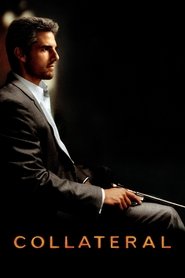Like Robert De Niro’s impeccably controlled thief in Mann’s Heat, Cruise is all discipline, his energy taut and controlled. But the actor lacks the emotional undercurrents that De Niro brought to the table. He’s only capable of projecting surface pleasures; it’s a sharply defined performance, but it lacks depth. [A] master of grand operatic gestures, Mann’s broad-sided portrayals of machismo don’t work when confined to a chamber piece. Limited by the number of shots he can take from within this taxicab, the director runs out of places to go—and he’s not aided by Cruise’s impassiveness or Foxx’s actor-y facial tics and stutters.
— Jeremiah Kipp (Slant Magazine)
One thing that’s clear is that Mann’s gotta do what Mann’s gotta do, and that’s give these pointy-headed conundrums a throbbing backbeat and the moodiest visuals in Hollywood. Men’s fashion magazines have followed this director ever since his Miami Vice days. The way he frames his characters to bring out both their alienation and their glamour makes you think, “That is God’s loneliest man—and where can I get that suit?”
— David Edelstein (Slate)
For Mann, there was something poetic about Los Angeles at night that spoke to him, especially how the city looks in the late spring and early summer months when the marine layer hovers overhead. “There’s a whole cloud bank at about 1,200 feet, and then the sodium vapor lamps, which were mostly what was around in [2004, before being replaced by LEDs in recent years], bounce off the bottom of those clouds. It’s as if you’re in England in November or December at about four in the afternoon,” said Mann. “It’s both attractive and appealing and sensuous. There’s also something surreal about it, and it suggests a certain kind of transitory state to everything. It captured both something quite beautiful, but also something very transient about our circumstances living in this city and living life.”
— Chris O'Falt (IndieWire)

